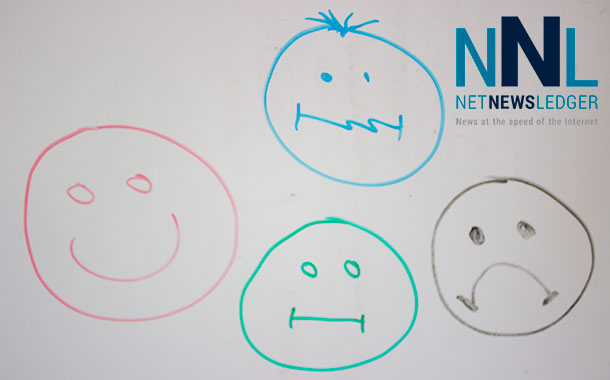 THUNDER BAY – HEALTH – Northern winters are long, and cold, and many hours are spent indoors. For many people sitting behind their screens on social media is a way to spend hours every day. Facebook, Twitter, Instagram, and Youtube have become engrained in the daily lives of millions.
THUNDER BAY – HEALTH – Northern winters are long, and cold, and many hours are spent indoors. For many people sitting behind their screens on social media is a way to spend hours every day. Facebook, Twitter, Instagram, and Youtube have become engrained in the daily lives of millions.However the latest research suggests the more time young adults use social media, the more likely they are to be depressed, according to the University of Pittsburgh School of Medicine.
The findings could guide clinical and public health interventions to tackle depression, forecast to become the leading cause of disability in high-income countries by 2030. The research, funded by the National Institutes of Health, is published online and scheduled for the April 1 issue of the journal Depression and Anxiety.
This was the first large, nationally representative study to examine associations between use of a broad range of social media outlets and depression. Previous studies on the subject have yielded mixed results, been limited by small or localized samples, and focused primarily on one specific social media platform, rather than the broad range often used by young adults.
“Because social media has become such an integrated component of human interaction, it is important for clinicians interacting with young adults to recognize the balance to be struck in encouraging potential positive use, while redirecting from problematic use,” said senior author Brian A. Primack, M.D., Ph.D., director of Pitt’s Center for Research on Media, Technology and Health.
In 2014, Dr. Primack and his colleagues sampled 1,787 U.S. adults ages 19 through 32, using questionnaires to determine social media use and an established depression assessment tool.
The questionnaires asked about the 11 most popular social media platforms at the time: Facebook, YouTube, Twitter, Google Plus, Instagram, Snapchat, Reddit, Tumblr, Pinterest, Vine and LinkedIn.
On average the participants used social media a total of 61 minutes per day and visited various social media accounts 30 times per week. More than a quarter of the participants were classified as having “high” indicators of depression.
There were significant and linear associations between social media use and depression whether social media use was measured in terms of total time spent or frequency of visits. For example, compared with those who checked least frequently, participants who reported most frequently checking social media throughout the week had 2.7 times the likelihood of depression. Similarly, compared to peers who spent less time on social media, participants who spent the most total time on social media throughout the day had 1.7 times the risk of depression. The researchers controlled for other factors that may contribute to depression, including age, sex, race, ethnicity, relationship status, living situation, household income and education level.
Lead author Lui yi Lin, B.A., who will be graduating from the University of Pittsburgh School of Medicine this spring, emphasized that, because this was a cross-sectional study, it does not disentangle cause and effect.
“It may be that people who already are depressed are turning to social media to fill a void,” she said.
Conversely, Ms. Lin explains that exposure to social media also may cause depression, which could then in turn fuel more use of social media. For example:
• Exposure to highly idealized representations of peers on social media elicits feelings of envy and the distorted belief that others lead happier, more successful lives.
• Engaging in activities of little meaning on social media may give a feeling of “time wasted” that negatively influences mood.
• Social media use could be fueling “Internet addiction,” a proposed psychiatric condition closely associated with depression.
• Spending more time on social media may increase the risk of exposure to cyber-bullying or other similar negative interactions, which can cause feelings of depression.
In addition to encouraging clinicians to ask about social media use among people who are depressed, the findings could be used as a basis for public health interventions leveraging social media. Some social media platforms already have made forays into such preventative measures. For example, when a person searches the blog site Tumblr for tags indicative of a mental health crisis—such as “depressed,” “suicidal” or “hopeless”—they are redirected to a message that begins with “Everything OK?” and provided with links to resources. Similarly, a year ago Facebook tested a feature that allows friends to anonymously report worrisome posts. The posters would then receive pop-up messages voicing concern and encouraging them to speak with a friend or helpline.
“Our hope is that continued research will allow such efforts to be refined so that they better reach those in need,” said Dr. Primack, who also is assistant vice chancellor for health and society in Pitt’s Schools of the Health Sciences and professor of medicine. “All social media exposures are not the same. Future studies should examine whether there may be different risks for depression depending on whether the social media interactions people have tend to be more active vs. passive or whether they tend to be more confrontational vs. supportive. This would help us develop more fine-grained recommendations around social media use.”
Additional authors of the study were Jaime E. Sidani, Ph.D., Ariel Shensa, M.A., Ana Radovic, M.D., M.Sc., Elizabeth Miller, M.D., Ph.D., Jason B. Colditz, M.Ed., Beth Hoffman, B.Sc., and Leila M. Giles, B.S., all of Pitt.





